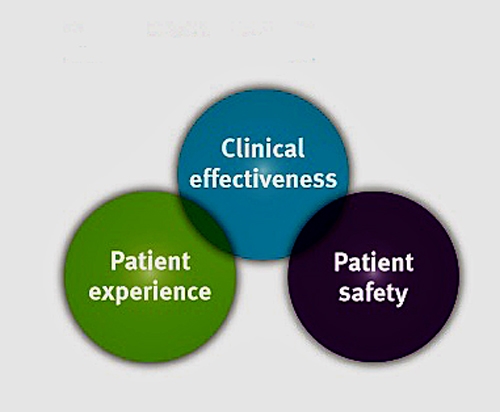- In June 2008 the Department of Health published “High quality care for all: NHS next stage review,”1 which aimed to provide strategies to deliver effective care and was reinforced by the publication of the Health and Social Care Act 2012,2 which aimed to establish provision of NHS services in England as well as addressing public health matters, social care issues and making provisions about a National Institute for Health and Care Excellence.
- The Healthcare Quality Improvement partnership highlights that these documents show that there are three dimensions (Figure 1) which must be present to deliver high quality service.
- These include clinical effectiveness, which is ensuring care is delivered in lines with best practice, patient safety where care is delivered in a way to minimise risk and patient experience, where care looks to address individual needs.3

Figure 1. Three dimensions quality improvement